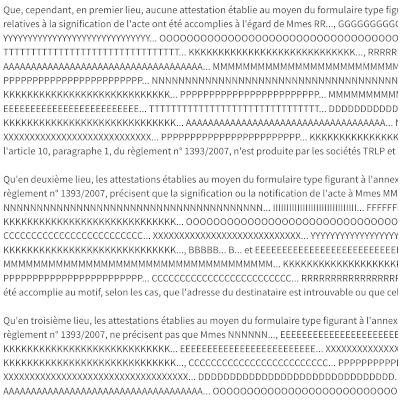Anonymisation
The law of 7 October 2016 for a digital Republic had affirmed it: open data was becoming the ordinary modality for public acts, and in particular for court decisions. After an appropriate decree, the latter should thus be available to all, on the portal already hosting the laws of the Republic.
However, this publicity had a counterpart: the protection of those being tried and of the parties involved, through the anonymisation of the said decisions. Oh, of course, the aim was not to ensure that their identity could not be determined by cross-referencing sources, particularly in cases covered by the press, but to prevent these documents from appearing in search engine databases or being the subject of massive data exploitation.
This anonymisation itself, however, requires massive processing, at least partly automated, in order to erase names and replace them with an initial. This is how, thanks to programmes, the dry and precise legal language of a decision of the Civil Chamber of the Court of Cassation now looks like machine code in this html copy.
Thanks to the laws on open data, the written decision is now public, but only machines seem to read it.







